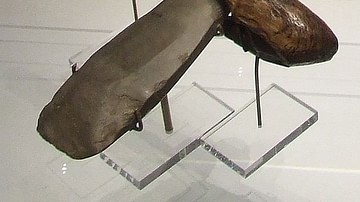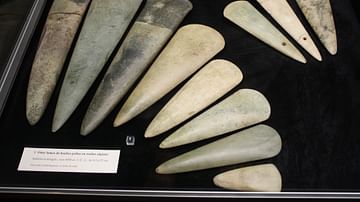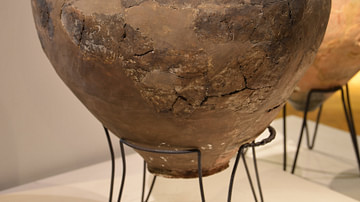Search
Search Results

Article
Top 10 Inventions of the Industrial Revolution
The British Industrial Revolution transformed life at work and at home for practically everyone. Noise, pollution, social upheaval, and repetitive jobs were the price to pay for labour-saving machines, cheap and comfortable transportation...

Article
Why the Industrial Revolution Started in Britain
The Industrial Revolution saw a wave of technological and social changes in many countries of the world in the 18th and 19th centuries, but it began in Britain for a number of specific reasons. Britain had cheap energy with its abundant supply...

Image
Major Indo Iranian Neolithic Sites & the Indus Civilization
The map shows the extent of the Harappan or Indus Civilization along with the various neolithic sites in the region.

Image
Neolithic Variscite Necklace
A variscite necklace from the Neolithic site of Carnac, north-west France. (Archaeological Museum of Carnac)

Image
Neolithic Stone Axe with Wooden Handle
A Neolithic stone axe with a wooden handle, found at Ehenside Tarn. It is on display in the British Museum, London.

Image
Neolithic Flint Dagger from Ba'ja
A rare example of Neolithic daggers made by pressure knapping, found in a group burial Ba'ja, north of Petra, Jordan, 7500-7000 BCE.
The Jordan Museum, Amman.

Image
Neolithic Axe Heads
Axe heads of jadeite and eclogite from the neolithic site of Carnac, north-west France. (Archaeological Museum of Carnac)

Image
Qvevri, Neolithic Terracotta Wine Jar
Terracotta wine jar, known as qvevri, with a capacity of approximately 100 litres (26 gal), the earliest Neolithic evidence for the beginnings of a wine culture in which wine dominated social and economic life has been found in the Republic...

Article
6 Key Instruments of the Scientific Revolution
The Scientific Revolution (1500-1700) was driven by several key inventions, all scientific instruments that became essential to achieving a greater understanding of the world around us. With instruments like the telescope, microscope, thermometer...

Article
Causes of the American Revolution
The American Revolution (c. 1765-1789) was a definitive event in Western history that saw the emergence of the United States and helped spawn additional waves of revolutions and societal upheavals on both sides of the Atlantic. Though the...